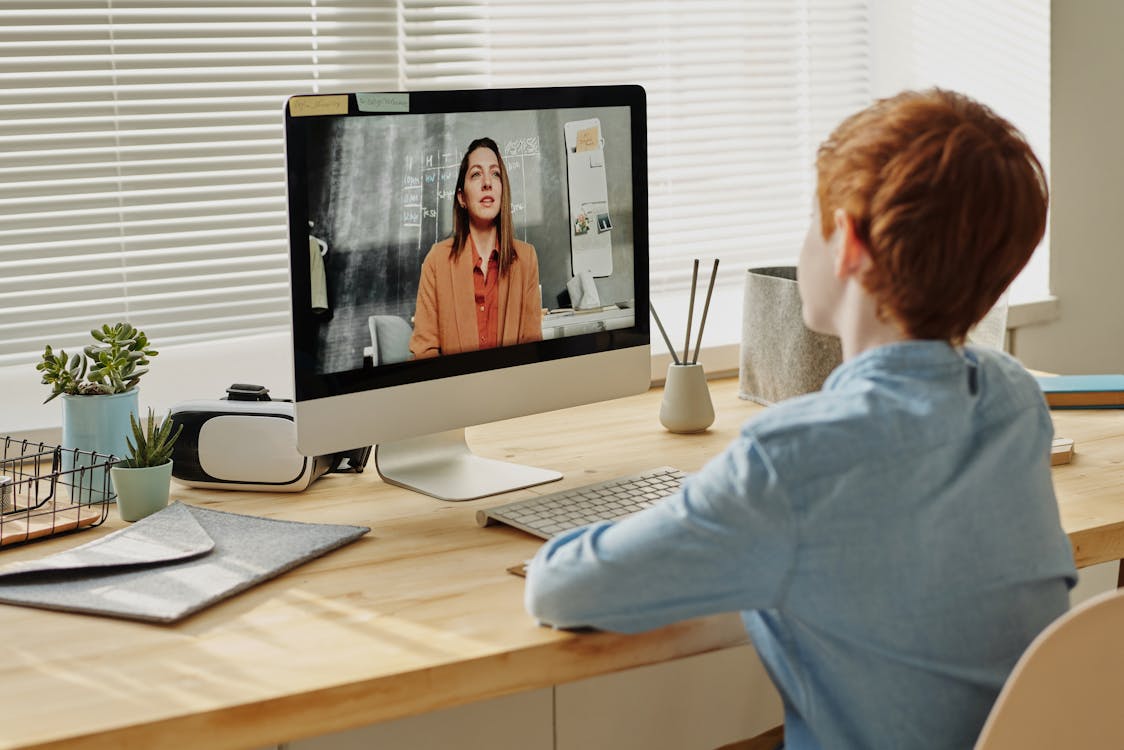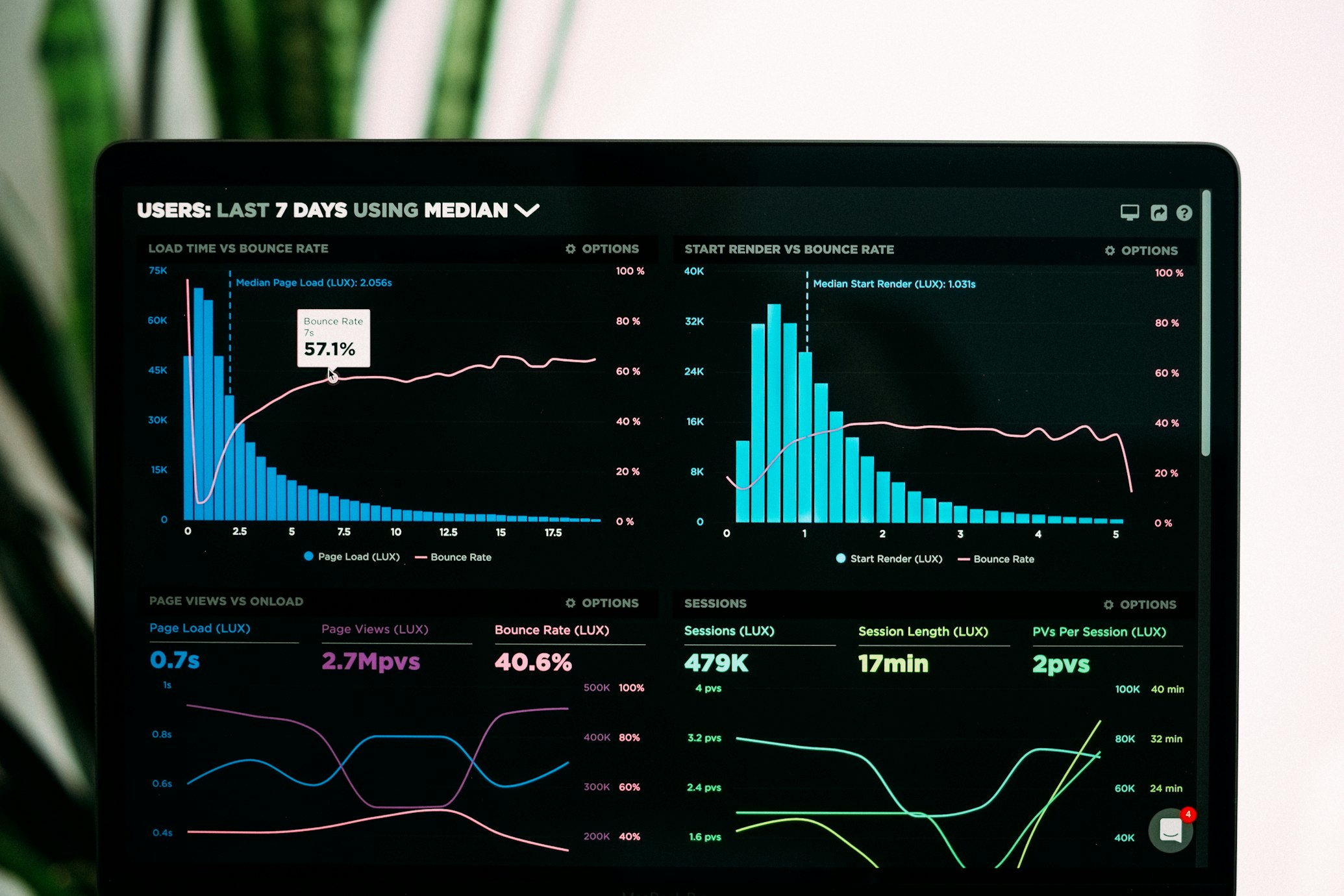7 Powerful Marketing Funnel Examples That Actually Convert
Ever seen an ad on Instagram for a cool new gadget, clicked it, got lost in the reviews, and 20 minutes later found yourself typing in your credit card details? That wasn't an accident. You were expertly guided through a marketing funnel.
From the first glance to the final "Buy Now" click, the most successful businesses don't leave conversions to chance. They build a clear, intentional path that turns casual browsers into loyal, paying customers.
What Is a Marketing Funnel (And Why You Absolutely Need One)?
A marketing funnel is a visual representation of the journey a person takes from first learning about your brand to making a purchase. Think of it like a real-world funnel: it’s wide at the top to catch as many potential customers as possible, and it gradually narrows as you guide the most qualified prospects toward a final decision.

The purpose of a funnel is to map out, measure, and optimize each step of this journey. Without one, your marketing efforts can feel random and disconnected. With a well-designed funnel, you create a predictable, repeatable system for generating leads and driving sales.
In this post, we’ll break down 7 real-world, high-converting marketing funnel examples you can adapt for your own business, no matter your industry.
The Core Stages of a High-Converting Funnel
Before we dive into the examples, it’s crucial to understand the psychology behind them. Most successful funnels follow a framework that mirrors how humans naturally make decisions. This is often described by the AIDA model.
Understanding the AIDA Model: The Psychology of Conversion
The AIDA model is a classic marketing framework that describes the four cognitive stages a consumer goes through before converting.
- Awareness (Top of Funnel - TOFU): This is where a prospect first becomes aware of your brand or solution. They have a problem or a need, and you've just appeared on their radar. Think blog posts, social media content, and paid ads.
- Interest (Middle of Funnel - MOFU): The prospect is now actively researching solutions and evaluating their options. Your goal is to capture their interest and build trust. This is where lead magnets, case studies, and webinars shine.
- Desire (Middle/Bottom of Funnel - MOFU/BOFU): You've earned their trust, and now it's time to create a specific desire for your product or service. Show them why your solution is the best possible choice. This stage often involves targeted email sequences, product demos, and free trials.
- Action (Bottom of Funnel - BOFU): The final step. The prospect is ready to convert. Your job is to make this step as easy and frictionless as possible with a clear call-to-action (CTA), like buying a product, booking a call, or signing up.
Why We Focus on TOFU, MOFU, and BOFU
Throughout this article, we’ll use the terms Top of Funnel (TOFU), Middle of Funnel (MOFU), and Bottom of Funnel (BOFU). This practical framework aligns perfectly with AIDA and gives us a clear structure for organizing our marketing activities:
- TOFU: Grabbing mass attention.
- MOFU: Generating and nurturing qualified leads.
- BOFU: Closing the sale and creating customers.
7 Powerful Marketing Funnel Examples (Stage-by-Stage)
Now, let's see how these stages come to life in different business models.
1. The E-commerce Product Funnel
- Who it's for: Online stores, DTC brands, and anyone selling physical products.
- Awareness (TOFU): A slick, engaging video ad on Instagram or TikTok shows a product solving a common, relatable problem. Alternatively, an influencer you follow posts about a new skincare product they genuinely love. This content is designed to stop the scroll.
- Interest (MOFU): The user clicks the ad and lands on a clean, professional product page. This page is loaded with high-quality images, a detailed description, and, most importantly, social proof like customer reviews and star ratings.
- Desire (MOFU/BOFU): What if they add the product to their cart but don't buy? This is where cart abandonment emails and retargeting ads come in. They start seeing ads for that exact product, reminding them of what they left behind. They might also get an email with the subject line, "Did you forget something?" offering a 10% discount to seal the deal.
- Action (BOFU): The checkout process is seamless. It accepts multiple payment options (like Shop Pay, PayPal, or Google Pay) and has a big, bold "Complete Purchase" button.
- Why This Funnel Works: It combines visual, attention-grabbing ads with powerful trust signals (reviews) and urgency tactics (retargeting offers) to guide a user from casual interest to a confident purchase.

2. The SaaS Free Trial Funnel
- Who it's for: Software companies and subscription-based services (e.g., project management tools, design software).
- Awareness (TOFU): A potential customer searches Google for "how to manage team projects effectively." They find an SEO-optimized blog post from a project management software company that provides genuinely helpful tips.
- Interest (MOFU): Within that blog post, a clear Call-to-Action (CTA) banner reads, "Streamline Your Projects. Start Your Free 14-Day Trial." This leads to a simple landing page that only asks for a work email and password to get started.
- Desire (MOFU/BOFU): Once the trial starts, an automated email onboarding sequence kicks in. Day 1 highlights the #1 feature. Day 3 shares a customer success story. Day 7 offers a link to a video tutorial. These emails are designed to ensure the user experiences the software's "aha moment."
- Action (BOFU): As the trial period nears its end, in-app prompts and emails like "Your trial ends in 3 days!" make it easy to upgrade. The pricing page is clear, and the upgrade process takes just a few clicks.
- Why This Funnel Works: It leads with value (helpful content) and allows the product to sell itself through a free trial. The automated onboarding ensures users discover the key benefits, making the upgrade decision easy.
3. The Lead Magnet & Email Nurture Funnel
- Who it's for: Consultants, coaches, real estate agents, and B2B service providers.
- Awareness (TOFU): A business consultant appears as a guest on a popular industry podcast. During the interview, they mention a free resource they created: "The Ultimate Client Acquisition Checklist."
- Interest (MOFU): Listeners visit the consultant's website, where a prominent landing page offers the free checklist in exchange for their email address. The page clearly outlines the benefits of the checklist.
- Desire (MOFU/BOFU): After downloading the checklist, the new lead enters a 5-day automated email sequence designed to build trust and authority.
- Email 1: Delivers the checklist and introduces the consultant.
- Email 2: Shares a common mistake businesses make (and how to fix it).
- Email 3: Presents a compelling case study of a client's success.
- Email 4: Addresses a common objection or fear.
- Email 5: Introduces the consultant's paid coaching program.
- Action (BOFU): The final email directs the user to a sales page or a link to book a free 15-minute discovery call to see if the program is a good fit.
- Why This Funnel Works: It trades a high-value piece of content (the lead magnet) for permission to market. The email sequence then systematically builds a relationship, establishes expertise, and presents the paid offer to a warm, engaged audience.
4. The High-Ticket Webinar Funnel
- Who it's for: High-ticket coaches, course creators, and B2B sales teams selling premium products.
- Awareness (TOFU): A course creator runs Facebook and LinkedIn ads promoting a "Free Live Masterclass on How to Triple Your Agency's Revenue." Organic social media posts also push followers to register.
- Interest (MOFU): The ad clicks through to a webinar registration page. This page highlights key takeaways, features a countdown timer to create urgency, and includes a short bio of the host to build authority. After registering, they receive a sequence of reminder emails to build anticipation and maximize attendance.
- Desire (MOFU/BOFU): The live webinar itself provides immense value for the first 45-60 minutes, teaching actionable strategies. In the final 15-20 minutes, the host transitions to a pitch for their premium coaching program, presenting it as the perfect solution to implement what was just taught.
- Action (BOFU): A special, time-sensitive offer is made exclusively to live attendees (e.g., a discount or extra bonuses). A clear CTA button appears on the screen, directing them to a checkout page. A follow-up sequence with the replay is sent to all registrants, reminding them of the expiring offer.
- Why This Funnel Works: It leverages authority and scarcity. By providing massive value upfront in the webinar, the host earns the right to pitch. The limited-time offer for attendees creates powerful urgency, driving immediate sales.

5. The Local Service Business Funnel
- Who it's for: Plumbers, dentists, lawyers, contractors, and other local service providers.
- Awareness (TOFU): Someone's pipe bursts. They frantically search "emergency plumber near me" on their phone. A well-optimized Google Business Profile with dozens of positive reviews appears at the top of the search results.
- Interest (MOFU): They click on the Google listing and are taken to a simple, mobile-friendly website. The phone number is a "click-to-call" button, prominently displayed at the top.
- Desire (MOFU/BOFU): The website builds immediate trust. It features testimonials from happy customers, before-and-after photos of past jobs, and clear "Get a Free Quote" or "Book an Appointment" buttons on every page.
- Action (BOFU): The user either fills out a short contact form or, more likely, uses the click-to-call button to make a direct phone call. For local services, immediate contact is the key conversion.
- Why This Funnel Works: It is built for speed and trust. It capitalizes on high-intent search queries and makes it incredibly easy for a potential customer with an urgent problem to make contact.
6. The B2B Content & Demo Funnel
- Who it's for: B2B companies with a longer, more complex sales cycle.
- Awareness (TOFU): A marketing director at a large company reads an in-depth article on an industry blog about the future of marketing automation. The article was written by an executive at a B2B software company.
- Interest (MOFU): At the end of the article, there's a CTA to download a comprehensive "2024 State of Marketing Report." To get it, the director must provide their name, company, and business email. This is known as gated content.
- Desire (MOFU/BOFU): The lead is now in the company's CRM. It's passed to a Sales Development Rep (SDR) who researches the director's company. The SDR then sends a personalized email referencing the report they downloaded and asks if they'd be open to a 20-minute product demo to see how the software could solve their specific challenges.
- Action (BOFU): The director agrees to a demo. The sales team delivers a compelling presentation tailored to the prospect's needs, which leads to a formal proposal and, eventually, a signed contract.
- Why This Funnel Works: It respects the B2B buyer's journey, which is based on research and relationship-building. It uses high-value content to identify qualified leads and then uses a human touch to nurture them toward a high-value sale.
7. The Affiliate Marketing Funnel
- Who it's for: Bloggers, content creators, and media publishers.
- Awareness (TOFU): A user planning a trip searches for "best noise-canceling headphones for travel." They find a highly-ranked, SEO-optimized blog post or a detailed YouTube video comparing the top 5 models.
- Interest (MOFU): The content provides genuine, unbiased value. It breaks down the pros and cons of each product, discussing battery life, comfort, and sound quality. This builds trust with the reader or viewer.
- Desire (MOFU/BOFU): The creator includes a clear comparison table and gives their top recommendation. They use strong CTAs with their unique affiliate links, such as "Check the Latest Price on Amazon" or "Buy it on Best Buy."
- Action (BOFU): The user clicks the affiliate link and is taken to the merchant's website (e.g., Amazon). When they make a purchase, the content creator earns a commission at no extra cost to the buyer.
- Why This Funnel Works: It's built entirely on trust. The creator acts as a knowledgeable friend, helping the user make an informed decision. The conversion happens because the user trusts the recommendation.
How to Build and Optimize Your Own Converting Funnel
Feeling inspired? Here’s a simple framework to get started.
1. Choose the Right Funnel for Your Business
Don't overcomplicate it. Start with the funnel that most closely matches your business model:
- Selling physical products? Start with the E-commerce Funnel (#1).
- Selling software? Start with the SaaS Free Trial Funnel (#2).
- Selling your expertise? Start with the Lead Magnet (#3) or Webinar Funnel (#4).
- Serving a local area? Start with the Local Service Funnel (#5).
2. Gather Your Funnel-Building Toolkit
You don't need a dozen expensive tools. Focus on these key categories:
- Landing Page Builders: Tools like Leadpages or Instapage to create focused pages for your ads, lead magnets, and webinars.
- Email Marketing Software: Services like ConvertKit or Mailchimp to capture leads and build automated nurture sequences.
- CRM (Customer Relationship Management): Platforms like HubSpot or Salesforce to manage leads and track interactions, especially for B2B and high-ticket sales.
- Analytics Tools: Essential tools like Google Analytics and Hotjar to understand user behavior and identify where people are dropping off in your funnel.
3. Measure What Matters: Key Funnel Metrics
You can't improve what you don't measure. Track the conversion rate between each stage of your funnel. Key metrics include:

- Click-Through Rate (CTR): The percentage of people who click your ad or link.
- Landing Page Conversion Rate: The percentage of visitors who take the desired action (e.g., sign up, download).
- Cost Per Lead (CPL): How much you spend to acquire one new email lead.
- Customer Acquisition Cost (CAC): The total cost to acquire one new paying customer.
- Return on Ad Spend (ROAS): How much revenue you generate for every dollar spent on advertising.
Most importantly, always be testing. A/B test your headlines, your offers, your button colors, and your CTAs. Small, iterative changes can lead to significant improvements in performance over time.
Conclusion: Start Building Your Path to Predictable Growth
A marketing funnel isn't just a marketing buzzword—it's a strategic framework for achieving predictable, sustainable growth. By understanding the path your customers take, you can meet them with the right message at the perfect time, guiding them from stranger to loyal advocate.
Key Takeaways
- A funnel is a system that guides potential customers on their journey.
- Match your funnel type to your specific business model for the best results.
- Focus on providing genuine value at every single stage (TOFU, MOFU, and BOFU).
- Track your metrics, test your assumptions, and never stop optimizing.
Your Next Step
Now that you've seen the blueprints for success, it's time to start building. Take one of these examples and map out what it would look like for your own business.
Which of these marketing funnel examples is the best fit for your business, and what's one action you can take this week to start building it? Share your thoughts in the comments below!
